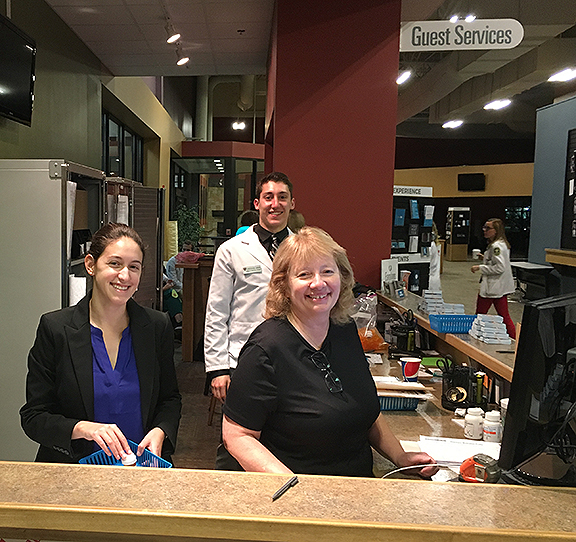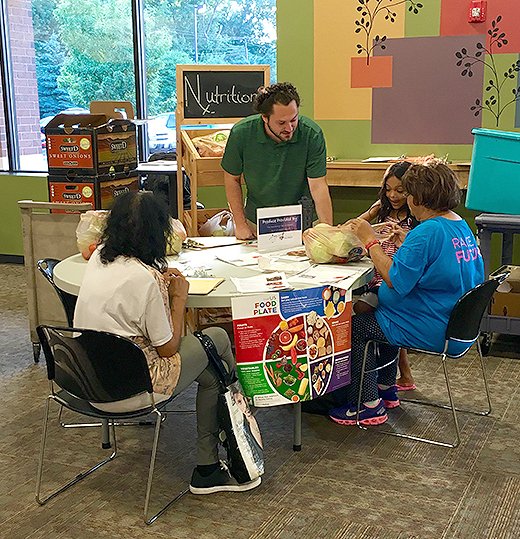UT Health students help at home
By Laurie Davis
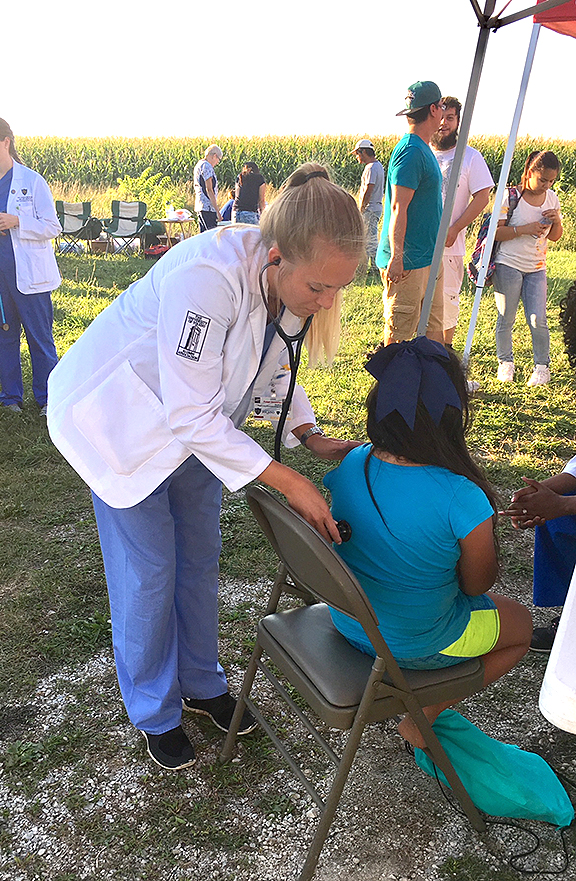
Paat, who started the program at UT, knows that poverty and homelessness are not exclusive to developing countries, but exist in the United States and right here in Toledo. “After the Haiti earthquake, we decided to start a medical mission here in our own backyard,” says Paat. “So, I started up a free clinic in Perrysburg, in a Latino area with 80 percent poverty.”
After the clinical program, called the CommunityCare Free Medical Clinic, was established, Paat moved the location to Cedar Creek Church on South Byrne Rd. “Every Thursday night, we see about 50 to 60 patients. It’s one of the largest free clinics in Ohio. We take care of 4,000 patients now,” says Paat.
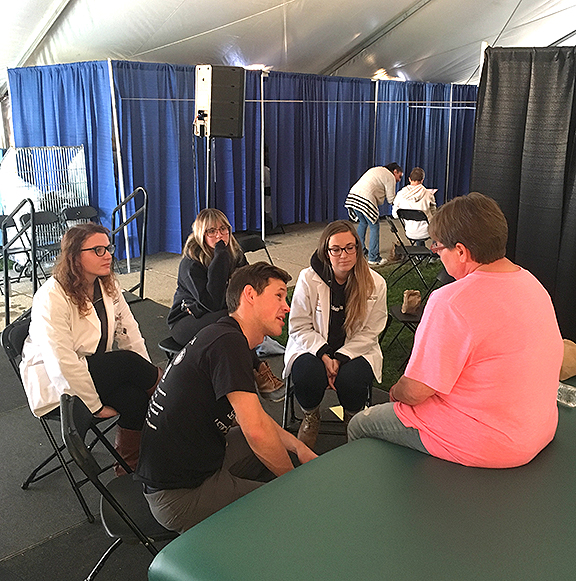
Paat says the CommunityCare Free Clinic uses the same interdisciplinary team approach to care as the global medical missions do. The free clinic offers patients social services, nutrition education, phlebotomy draws, and HIV and women’s health clinics. Medical and nursing students, and students from respiratory therapy, physical therapy, occupational therapy, social work and pharmacy are all part of the local team. “And, not just students,” says Paat, “but also practicing physicians.”
The church set up a hot meal service and as many as 60 people show up for the food and health exams. “This thing’s just morphed. It was never planned; it just kind of happened,” says Paat.
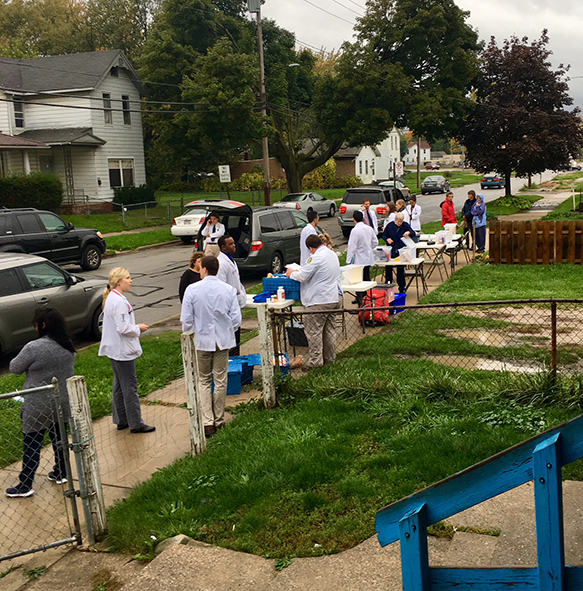
Some social services are available and some medical tests can be free of charge through different hospitals that have charity programs. For surgeries, Paat might contact the CEO of a hospital to coordinate an operation for a patient, or he will call on a friend and physician who will offer to do the surgery for free.
For Paat, who likes to expand health care for the needy as well as student opportunities for service learning, the global missions and the community clinic are but two of the programs he’s helped to launch. Once these two programs were established and operating regularly, he helped start a street mission for homeless people in Toledo through St. John’s Jesuit High School and St. Ursula’s Academy. “It’s called the Labre Program,” says Paat. “I’m a graduate of the high school, and I said ‘well, I’ve got nothing else to do on Monday nights.’ So, we set up tables and chairs that we pop into a van and a minivan. We intermingle with the poor, find out stories about them, walk with them through their journeys.”
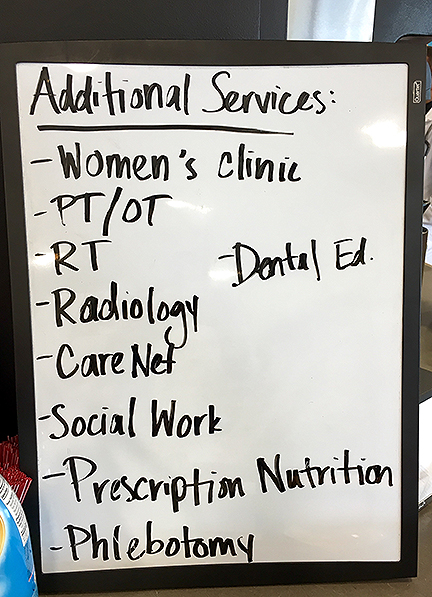
In the winter time, they pass out hats and coats, and the high school student volunteers from St. John’s and St. Ursula’s pass out food and hot chocolate. “We have lights and we do procedures, we have a pharmacy, and we have a social worker there and respiratory therapy. A social worker can do some things for people to help get them out of their homeless situation, but, we also know this is reality,” says Paat. Sometimes that reality can mean offering a tent to sleep in for protection from the weather.
In some instances, the team of medical volunteers are able to intervene and do more, like they currently are for a four-generation family of 11 who is living in a condemnable house with a hole in its roof and no running water. “The youngest child is 3 years old, and the matriarch is 78. One of the great-grandchildren is pregnant,” says Paat. “Last year, we were treating them and we found out they hadn’t had a working furnace in two weeks in the winter time. We fundraised to get them help with a furnace and a hot water tank. Now, we’re trying to get them moved to a different house.”Paat and his team are working with an organization called Historic South to fundraise and then acquire matching grants. They also have acquired a house on the City of Toledo’s destroy list that will be donated and renovated for this family.
Because of the condition of the home the family is now living in, Paat and his care team members reached out to the Lucas County Metropolitan Housing Authority to find a temporary house they can stay in through the winter months, until the house being renovated will be ready in the spring.“We can’t do that for everybody, but we can do it for a family that really needs it, and has been stuck in poverty for four generations.”
Doing this work has helped first-year students understand the kind of immediate impact they can have in the community. “You don’t have to be a full-fledged MD now, you just have to care,” says Paat. “This is our back yard. I’m going to a place in Puerto Rico where they haven’t had running water in seven weeks, but every single Monday, I’m at a house that hasn’t had running water in seven weeks.”


